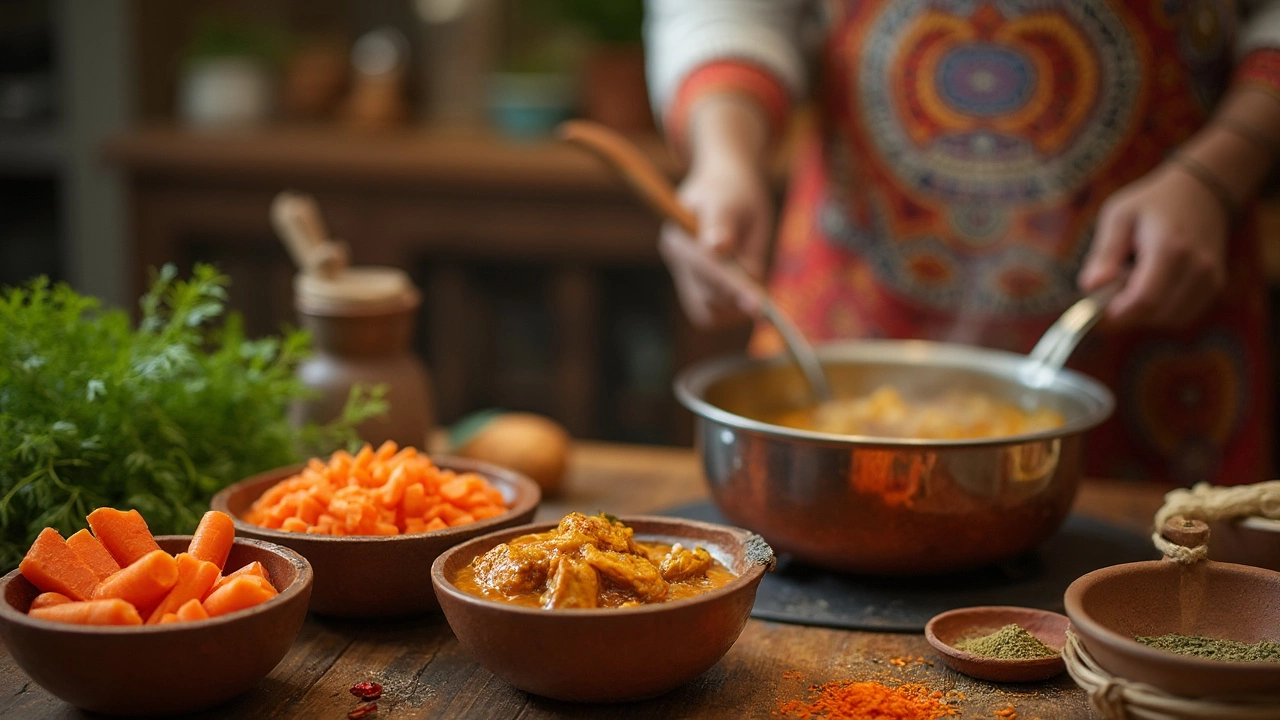Boil Carrots: Simple Steps, Health Benefits, and Indian Cooking Tips
When you boil carrots, cook sliced or whole carrots in simmering water until they reach a tender bite. Also known as steamed carrots, this method is a kitchen staple across cultures. It works because the heat transfers through the water, breaking down cellulose while keeping most of the natural sugars intact. Carrot, a bright orange root packed with beta‑carotene, fiber, and minerals responds well to gentle heat, becoming sweet without losing color. Likewise, boiling, a wet‑heat cooking method that uses water or broth at 100°C softens the vegetable’s structure, making it ready for mashing, pureeing, or tossing with spices. If you want to boil carrots perfectly every time, start with a pot of salted water, add the carrots in a single layer, and watch the clock – 5 minutes for thin rounds, up to 12 minutes for larger chunks.
Why Boiling Works for Carrots and Boosts Nutrition
The nutritional profile of carrots shines brightest after a quick boil. Nutrition, the collection of vitamins, minerals, and phytochemicals in food benefits from the heat because water‑soluble nutrients like vitamin C stay mostly preserved when cooking time is short. More importantly, beta‑carotene—your body’s source of vitamin A—becomes more bioavailable after the cell walls are softened, a classic example of how boil carrots can enhance eye health and immune support. Pairing boiled carrots with a pinch of salt or a dash of lemon juice not only balances flavor but also aids mineral absorption. Adding a pinch of cumin or mustard seeds to the boiling water creates a subtle spice infusion, showing that carrot nutrition and flavor are not mutually exclusive.
In Indian kitchens, boiled carrots often serve as a bridge between simple side dishes and more complex curries. After boiling, you can toss the carrots with tempering—hot oil, mustard seeds, curry leaves, and a sprinkle of ginger—to create a quick sabzi that pairs beautifully with dal, roti, or rice. The soft texture also makes carrots ideal for blending into creamy soups, chutneys, or raitas, where the mild sweetness balances tangy yogurt or coconut. If you’re planning a wholesome thali, consider stacking boiled carrots alongside bitter greens, protein‑rich paneer, and a spoonful of dal; the combination delivers protein, fiber, and a spectrum of vitamins in one meal. Whether you’re prepping for a weekday dinner or a festive spread, mastering the art of boil carrots opens up endless possibilities—so keep these tips handy as you explore the diverse recipes below.

Boiling Carrots for Chicken Curry: Good or Not?
Wondering if you should boil carrots before adding them to your chicken curry? This practical article explores whether pre-boiling carrots enhances texture and flavor in curry dishes. We'll discuss how carrot preparation can affect cooking time, nutrient retention, and the overall taste. Get tips on when to use raw carrots for a crunchy texture and when boiling might be a better option. Master the art of integrating carrots into your favorite curry.